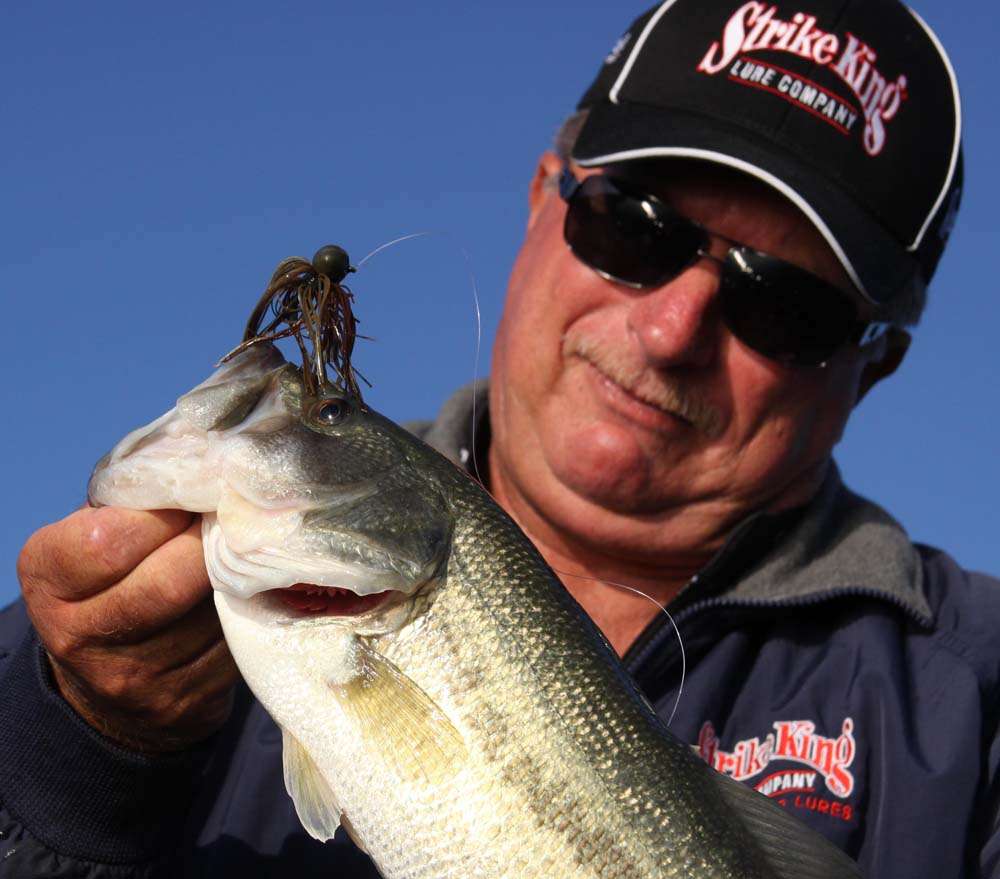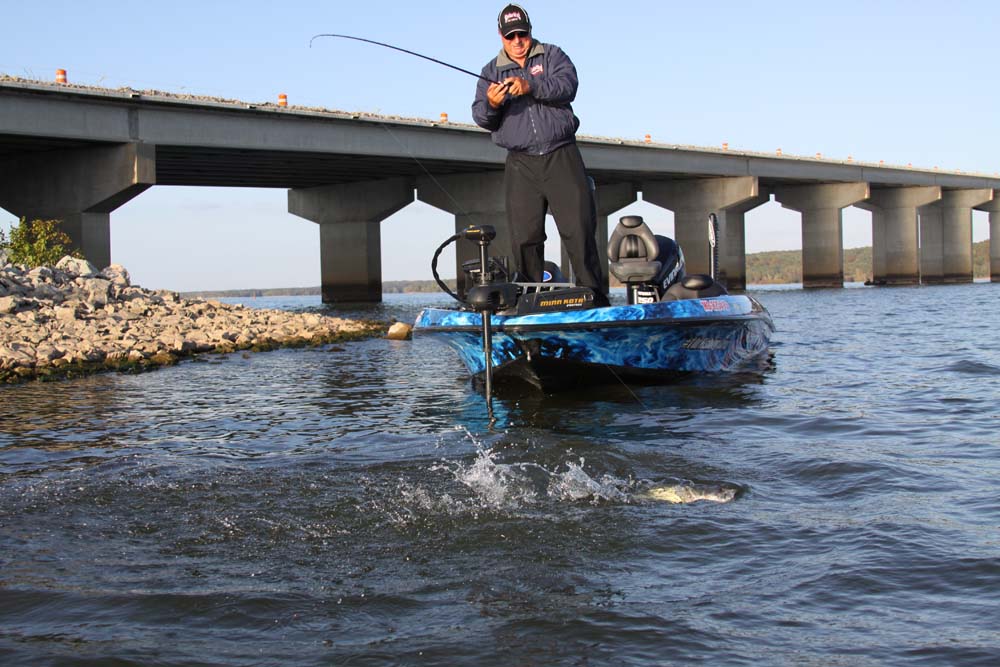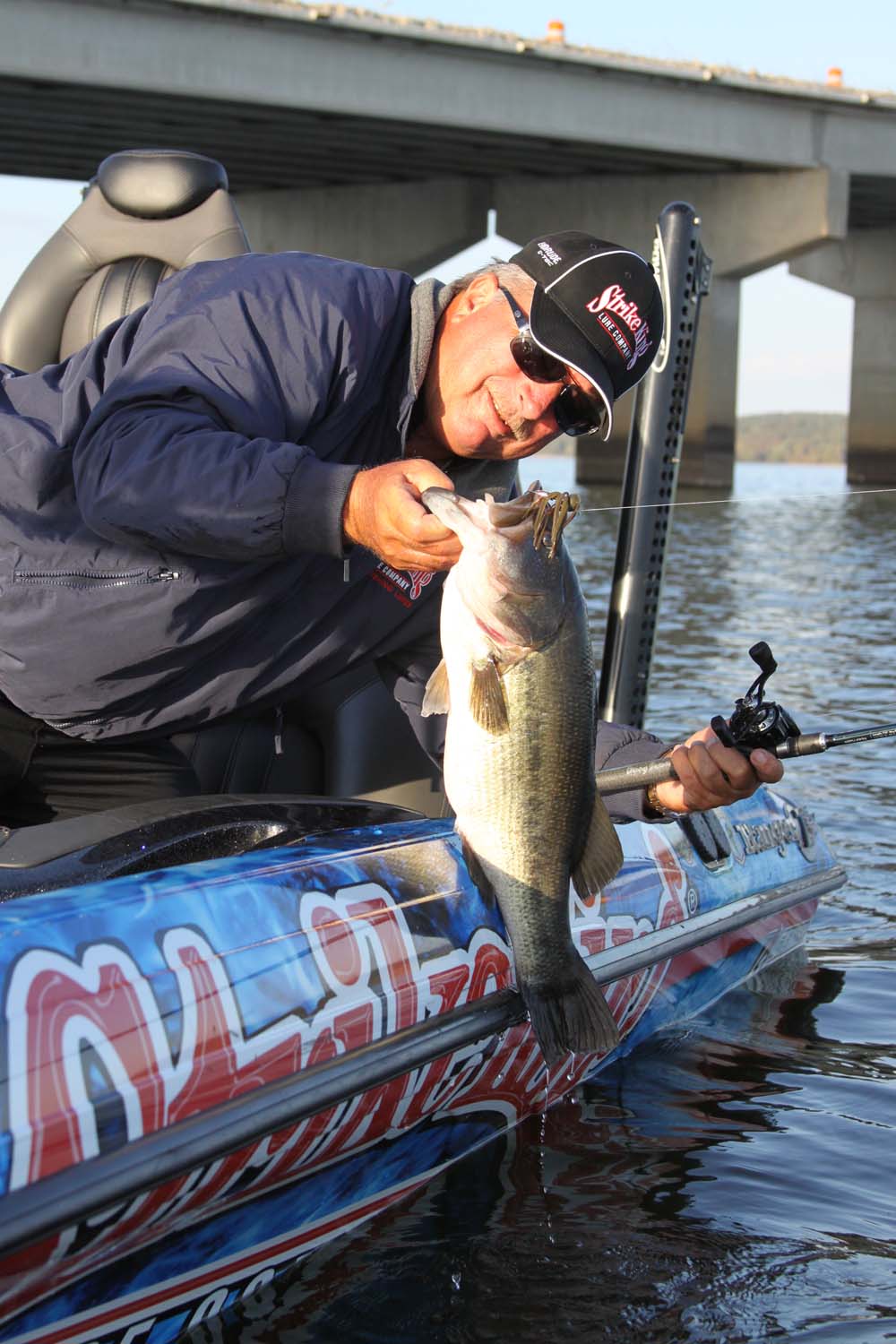
It’s no secret that Denny Brauer has a jig tied onto at least one rod every time he goes bass fishing.
But when he goes fishing this time of year, it’s the only lure tied to his rod.
“There’s not a better cold-water bait, nor is there a better one that you can rely on under the most brutal weather conditions,” insisted the legendary pro angler.
Better, he said, than soft plastics, tubes or crankbaits that grind the bottom.
There are reasons for that. First, the jig matches an easy winter forage (crawfish) that moves slowly and correlates well with the bass’ slower metabolism.
“Bass aren’t chasing this time of year, and they know a crawfish is easy prey,” said Brauer. “While bass may not eat as often, they still have to eat.”
Secondly, he added, you can fish the jig at all depths, on the bottom where they are feeding and in areas where the fish live during winter.
“I do more casting and crawling of the jig this time year than I do pitching and flipping,” Brauer noted.
While Del Rio, Texas, is now his home, the 17-time B.A.S.S. tournament winner grew up in Nebraska. Cold weather doesn’t discourage him from fishing.
“The fish will bite during the winter,” he insisted. “The problem is that most anglers are sissies and don’t want to go out there when it’s real cold, so they imagine the fish don’t bite. But, believe me, they do.”

Location and presentation are big keys. Brauer targets sharp breaking channel swings on the main lake but says you don’t have to fish as deep as some anglers believe — as long as deep water is nearby. Shallow flats with scattered wood or riprap on the lip of a channel swing make it even better.
“I’ve caught a lot of bass in two feet of water, and I’ve even caught fish by dragging a jig off shoreline ice and letting it fall into open water,” he explained. “In those lakes with grass, the bass will get tight under the mats, and you can punch a jig through there and catch them.”
Because the water is clear and the fish are lethargic, he limits his line to no bigger than 15-pound fluorocarbon line spooled on baitcast gear.
A few years ago, Lake of the Ozarks was frozen over and Brauer wanted to put some hours on a new boat. He launched in the river below the dam and couldn’t resist casting a jig at some likely targets.
“The water coming out of the dam was 32-34 degrees, and I caught a 5-pounder on a jig,” he described.
Brauer’s preferred jig for winter fishing is a 1/2-ounce Strike King in natural colors, although green pumpkin and black/blue remain his top choices.
“In the winter, the water is usually clear and you never have to go outside those colors,” he explained. “I also prefer the chunk-style trailers, as I don’t believe you want a lot of action in your jig trailers that time of year.”

There are times, however, when you do need to downsize your jig in ultra-clear, cold water.
“I was filming a show a few years ago, and it was so cold the cameramen were begging me to go in,” he recalled. “The water was freezing up my rod guides, yet I caught 40 or more bass that day, and all they would bite was a Strike King Finesse jig (Bitsy Bug) with a tiny trailer, fished on 8-pound line and spinning tackle.”
Brauer says anglers who have access to open water this winter will find jig fishing a good remedy for cabin fever.
“Once the water temperature gets into the 40s, fishing gets a little more difficult, but don’t let that discourage you from going,” he said. “If there is a warming trend or stable weather period, you can have a very good day — if you’re fishing a jig.”
Originally published January 2012





